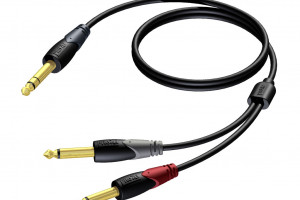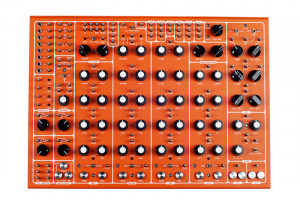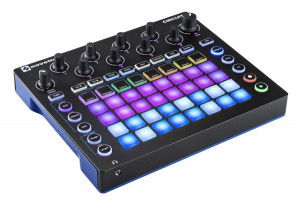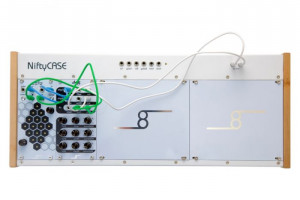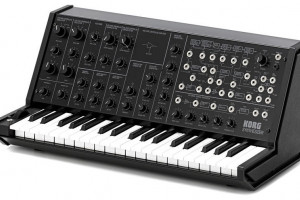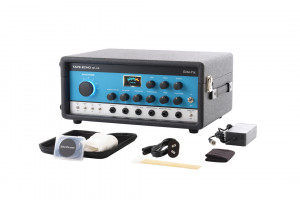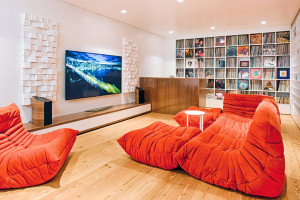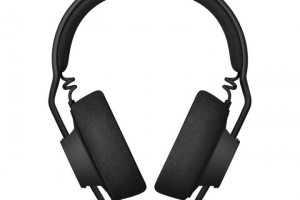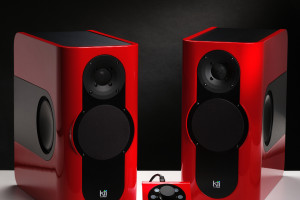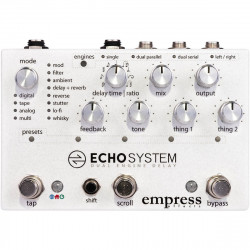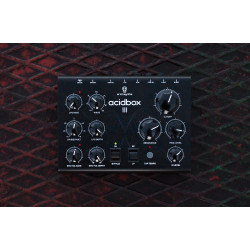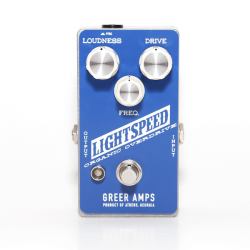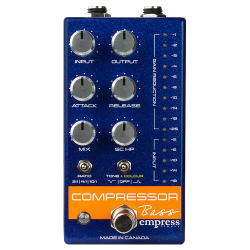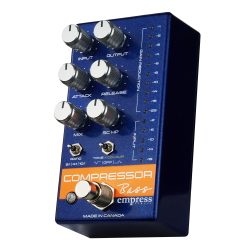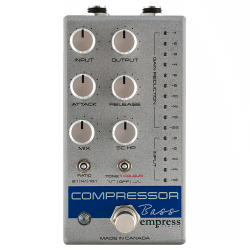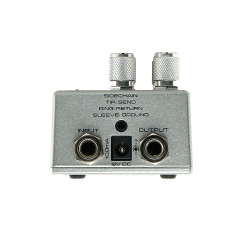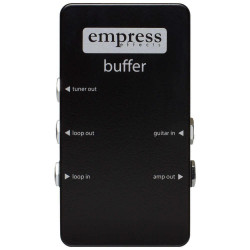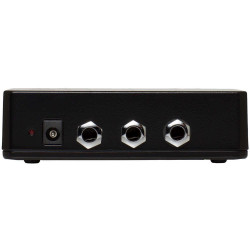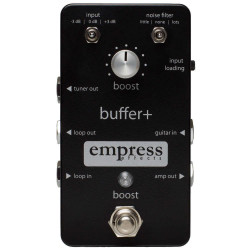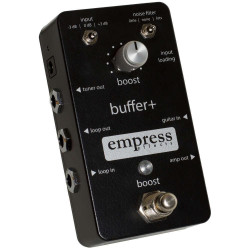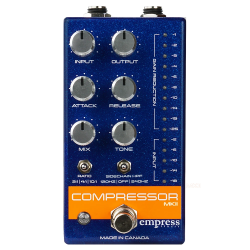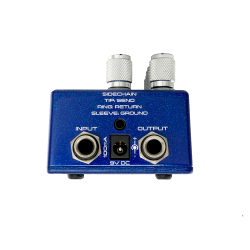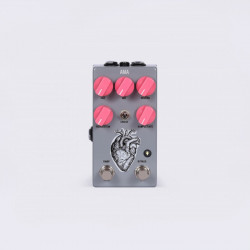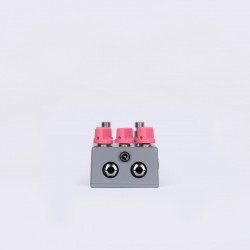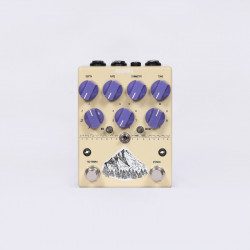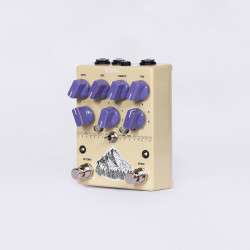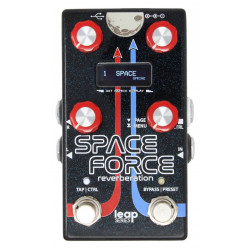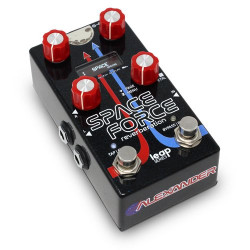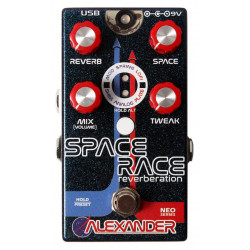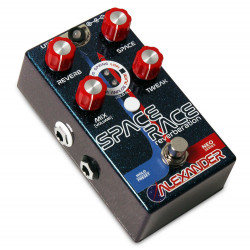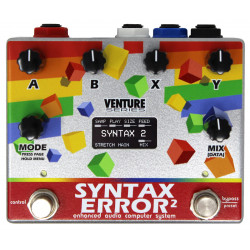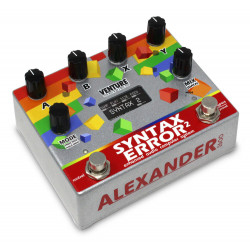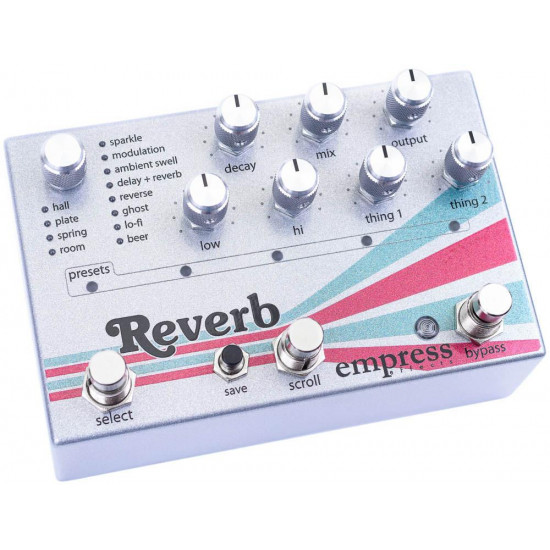
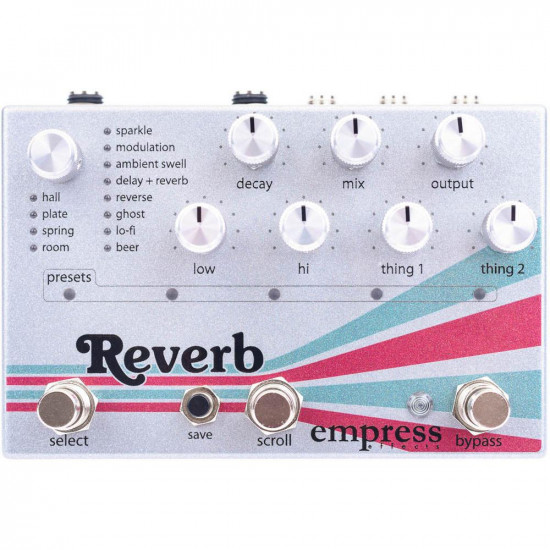
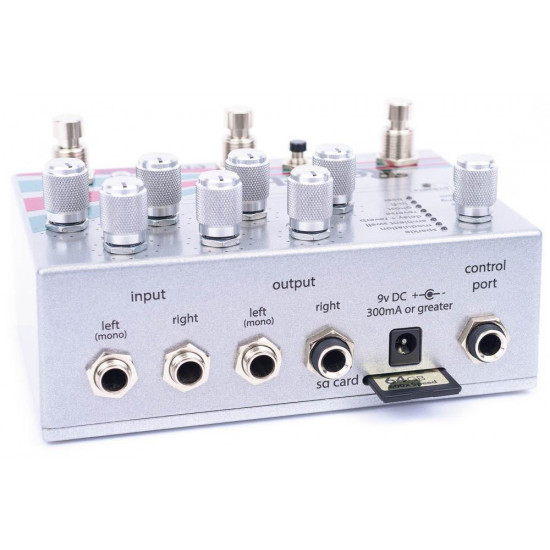
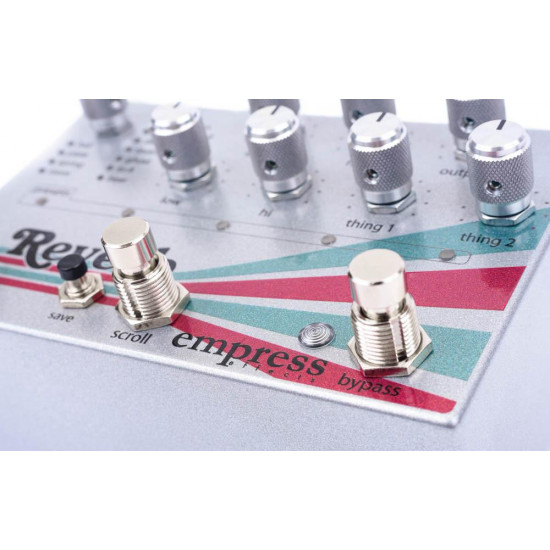
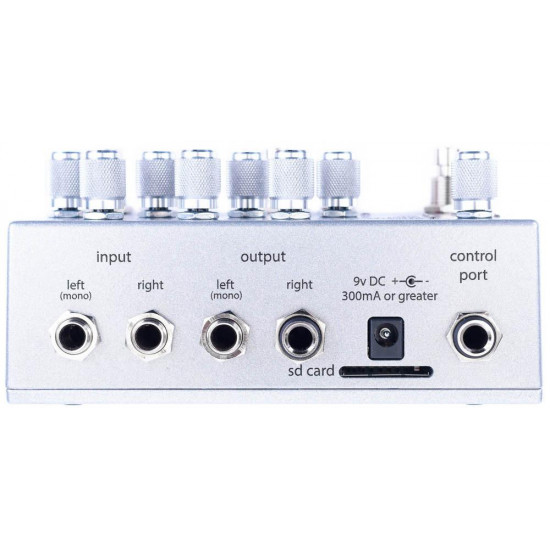





- Stock: In Stock
- Model: EMPRESS-REVERB
More from this brand
Overview
Realistic simulations of spaces, as well as never-before-heard surreal ambiances are represented with stunning sound quality. Sporting stereo ins and outs, a small footprint and all the controls at your finger-tips, it strikes the perfect balance of control and ease of use, avoiding laborious menus. Presets, the versatile control port, and MIDI open up a world of possibilities for live performances. Whether you're looking for a classic spring, realistic room or new sonic flavors to expand your creativity, this pedal delivers. And....it's got a beer mode!Features
- 32 studio quality algorithms as of firmware 6.0 and counting - The pedal has 12 algorithm types, some include multiple variations. For example, vintage and studio plate, dark and bright springs. Also, as more algorithms get added you can update your pedal via the SD Card. It's the pedal that keeps on giving.
- Pristine Classic Sounds - pristine sounding classic hall, plate, spring and room sounds that rival or surpass studio units costing many times more.
- Ambient Sounds - A complete palette of tweak-able ambient sounds that offer the creative player so much territory to explore and make their own.
- Easy to use and fast to dial in - All the algorithm controls are sitting on a knob in front of you, no fiddling through laborious menus.
- Tap Functions - many algorithms have infinite hold settings or the ability to tap in delay time.
- Low Noise signal path - Features a signal to noise ratio of >104dB and maintains an analog dry path.
- Up to 35 Presets - Settings can be saved to 35 presets. With three stomp switches, accessing the presets is easy.
- 2 Preset Modes - Bank style or scrolling style preset modes.
- True Bypass and Buffered Bypass - It can be configured to run with true bypass or buffered bypass if you want to hear trails.
- Cabinet Simulator - 3 variations to choose from, perfect for recording, practicing or for gigs without an amp.
- Output Transformer - Get hum-free operation when operating in stereo with two amps. Output 2 is isolated with a transformer to eliminate nasty ground loops.
- High Quality Audio - 48kHz sampling, with 24 bit conversion and 32 bit internal processing.
- Analog Dry Path - Dry signal is left untouched, and blended with the wet signal using VCA. (no zipper noise, hooray!)
- Unsurpassed Connectivity - The Universal Control Port allows you to connect an expression pedal, external tap switch, control voltage, external audio input and MIDI - all using a standard 1/4" jack!
- Advanced Configuration Menu - The Advanced configuration menu lets you configure how your reverb works. Select from true or buffered bypass, 0-35 presets, MIDI configuration, Control port control(expression pedal, external tap, control voltage and MIDI) as well as which style of preset system to use, input signal pad, output transformer enable and more!
- Small Size - The enclosure measures approximately 5.7" by 3.75" by 1.75", which is delightfully small when considering all the features packed into this unit.
Hall Reverb
Hall reverb usually refers to the Reverb in a concert hall. It's modeled from a large and fairly reflective space, and is typically used at longer decay times in the 2 or more seconds range.
Hall reverbs generally have more muted high frequency compared to other reverbs, which leads to a smooth warm sound. Because the room size is large, the early reflections are slower to arrive, and are very pronounced before the tail becomes diffuse.
In Use:
They sound beautiful and rich on slower more legato sources. They can sometimes get a little sloppy sounding on really transient parts.
Plate Reverb
Plate reverbs are an electro-mechanical device that vibrates a large sheet of metal to create reverb sounds. At one end is a driver that vibrates the metal, and at the other end a transducer that captures the vibration of the plate and turns it back into an electrical audio signal. The devices are pretty large, the famous EMT 140 measured about 7 feet long and 4 feet tall. The decay times could be controlled by applying damping to the different sections of the plate.
In Use:
The plate sound is present and bright sounding, especially the initial part of the sound. They're very versatile and can be used on just about any type of source. We've made the early bright part of the sound adjustable so you can really shape the response of the tail.
Spring Reverb
Spring Reverb units are little tanks that suspend springs between a driver and a transducer. They typically sit in the base of your amplifier. A driver circuit uses a coil and magnet to vibrate the springs, which creates reverberation. Like the plate, a receiver circuit at the other end of the springs converts the mechanical vibration back to an electrical audio signal. The sound varies depending on the amount of springs, the spring tension, and how much the signal is being driven. The electronics at the driver and receiving end can play a huge part in the tone of the sound. The decay can last up to 3 or 4 seconds.
In Use:
The spring sound is a classic sound for guitar players. Discrete delay-like reflections are heard in the response and there's a really distinctive 'plink' or 'boing' when injecting a really hard transient into the tank. At more overdriven and brighter settings you get that classic surf music tone. We've built-in the ability to control the rattle level and length into our algorithms, so there's a lot of tweak-ability that's not available in the real thing.
Room Reverb
This is another reverb based on a physical space. It generally has a shorter decay which depends on the size of the room, and the amount of absorptive materials on the walls. Because we spend most of our lives in small or medium sized rooms, it's a very natural sounding reverb. The key to a realistic sound are the dense early reflections. These are the first reflections from the floor, walls or ceiling that arrive to the ears after the direct sound. They're instrumental in creating the sense of size and space.
In Use:
The room is perfect in subtle applications and at shorter times. When used correctly it doesn't really sound like it's on, but you really notice what it's doing when you turn it off. If you need a dense sounding response and a short decay it will add what you're looking for - but it can also sound great at longer decays.
Sparkle
The sparkle is created by an octave effect that's fed into a large sounding tail. The octave is a little bit slow to build, and it goes higher and higher in pitch as time goes by. This creates a very airy and open sound. We strived to make it really smooth and spacious sounding.
In Use:
This mode adds a lushness and surreal element to the sound. It works well with slower legato playing.
Modulation
A reverb tail is typically made of numerous delay lines that are routed in clever ways to give a smooth sounding decay. In a delay pedal, when you modulate the delay line, it gives the repeats a slightly chorus-like sound. In the modulated reverb tail, there is modulation applied to each of the delay lines so you get a similar sound, but you don't hear the distinct chorus pulse because there's so many going on at once. This leads to a sound that's warm and smooth. In stereo, you'll notice it sounds huge.
In Use:
These modes will work on a variety of playing styles and parts. If you want to make a part really thick and warm this is the place to go. It's sort of like wrapping the guitar sound in a big soft blanket, on a cold Canadian winter night.
Ambient Swell
The ambient swell modes detect either breaks in your playing or use trigger detection to detect note starts, then they apply a smooth adjustable fade-in. You'll be able to create a soundtrack to a movie pretty easily!
In Use:
These modes shine at 100% wet and at long decay times. It would also be good to try the reverse modes to get similar sounds - although the reverse modes do a similar thing, in practice the end results can sound quite different.
Delay and Reverb
This classic combo is right up there with Peanut Butter and Jam. You've got to balance them just right, then the magic happens. You've heard this on every 80's recording, on every instrument, but that doesn't mean you should boycott it - with judicious use it's really musical.
In Use:
We've combined the delays with a really smooth tail. Use the select stompswitch to tap in a delay time or use the thing 1 knob to set it. Turning the knob creates a tape head moving sound that can do some crazy things when the delay time is super long.
Reverse
This ramps up your parts so they sound like they're fading in. It's a really cool effect when used subtly, but is also really cool used 100% wet.
In Use:
Sky's the limit here. This mode works well short or long, 100% wet or just a subtle amount.
Ghost
This mode adds a really smooth and spooky layer behind your dry playing. The tail is made up of a lot of resonant and modulated elements that meld together to create a really unique sound.
In Use:
The hi and low filters sound really great when you have them on the move with the resonance up. The resonance control and decay work together to shape the tone and length of the decay. We've built some compression in so that it won't blow up on you with high decay and resonance settings.
Using the Ghost mode is also awesome as a 2-person operation; one person playing the guitar and one person messing with the tone knobs in real time. If you don't have a personal assistant, you could use an expression pedal to control those parameters on the fly.
Lo-fi
In this mode the dry signal gets effected with some raunchy filtering and distortion along with the wet - giving you a complete lo-fi signal. The reverb tails aren't meant to be smooth. You'll hear some grainy discrete delays rattling around in there.
In Use:
This is a good mode for that intro or bridge where you want to switch things up - or if you're working on Tarantino film soundtracks.
Beer
This is the category where we're putting the stuff that doesn't fit anywhere else. We're looking forward to expanding this mode by adding all sorts of weird modes.
Currently we've got a random glitch mode and a gated reverb. These modes are not recommended for everyday, all-day excessive use. They're more recommended as a weekend indulgence - especially if you're supporting a family.
-285x169.png)
